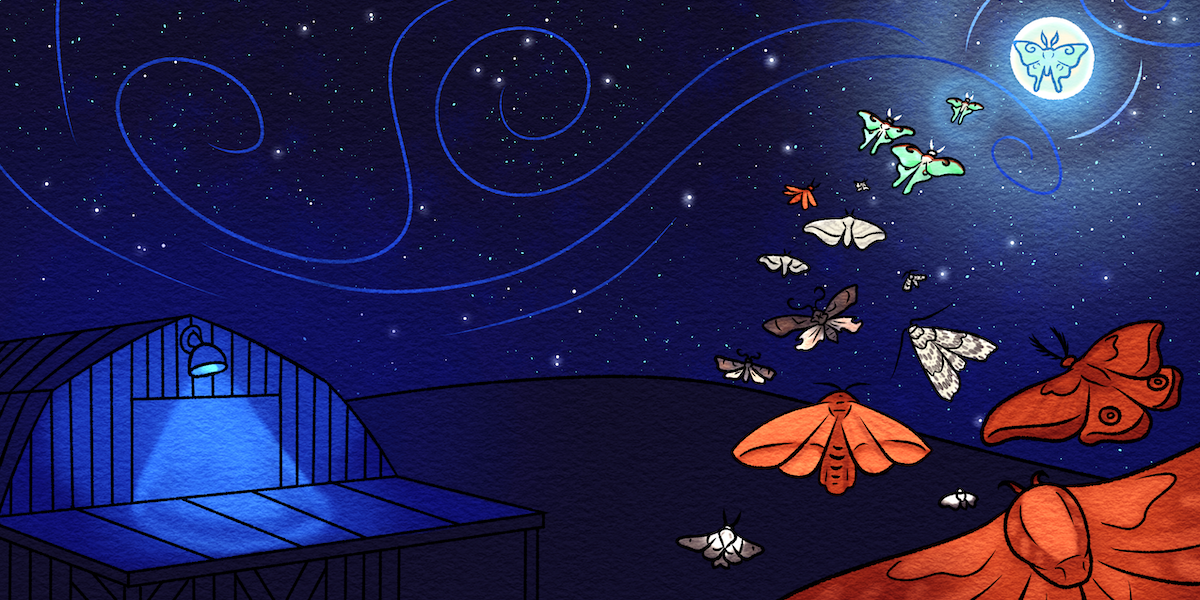
Joanna Becker ’21 exploring the wide-ranging world of book illustration
. . .
Friday, January 14th, 2022
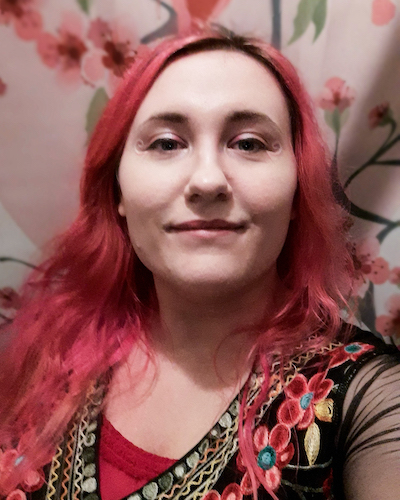
Lancaster-based artist Joanna Becker only graduated from Pennsylvania College of Art & Design in 2021, and she already has wrapped up illustrating her third book, with more projects and art passions in the wings.
How is that even possible? Well, for starters, her string of projects began even before she received her diploma, working on professional projects while still juggling classes and schoolwork.
For another, she made the most of community contacts, forming business relationships out of chance encounters.
The result? The Circus Train, Mistakes Are A-Okay, Maggy Maye, and The Moth that Flew to the Moon, three books with widely divergent demands and styles, all accomplished by Becker.
Between her own huge five-year project that expands her focus on illuminated and medieval art, and other client work (more on that later), Becker also is co-founder and co-owner of Bushi and Brush, an arts dojo that combines self-defense lessons with the exploration of creative arts.
How does she balance it all? Time-management, she says, and the ability to switch gears quickly: a skill that developed and evolved while earning her BFA in Illustration:

Cover of “Mistakes Are A-Okay, Maggy Maye,” illustrated by Joanna Becker ’21, Illustration. Used with artist’s permission.
The correct order of these books being published would be Circus Train, Maggy Maye and The Moth that Flew to the Moon, correct? Can you go into a bit more detail about that meeting with an author that led you to illustrate that first book?
Joanna Becker: Yes, that is the order! I had been invited to two meetings of an art market in Palmyra … There I met Sherri Queen, the author, and she gave me a copy of the book to read and I finished it throughout the day! We were able to discuss a lot of her vision for the illustrations in person and follow up about the project later. The woman holding the lantern is the first in the set, and all of the artwork was made traditionally with pen and ink with an old-fashioned etching/print style in mind.
What was it like to juggle that project, and schoolwork, AND the beginnings of a senior thesis project?
JB: It was quite hectic, and that is why it is important to have a diligent schedule to keep track of everything so it all comes together before the deadline. “The Circus Train” was a great set of illustrations to work on as a break from school projects, too.
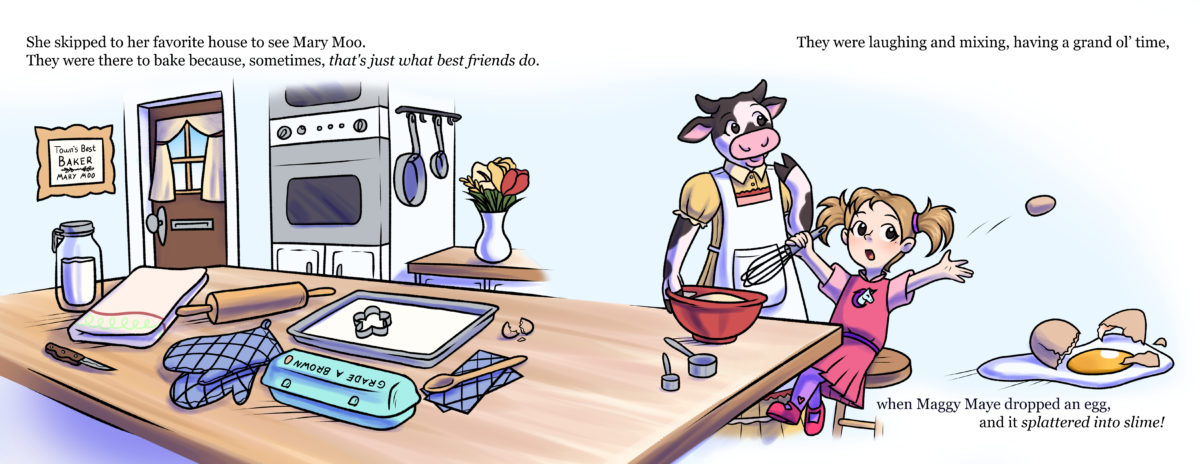
Illustration by Joanna Becker for “Mistakes Are A-Okay, Maggy Maye.” Used with artist’s permission.
Likewise, how did Maggy Maye and Moth come about for you?
JB: “Maggy Maye” had an interesting start: The author had posted a call for artists and specifically requested an illustrator who could work in a Seussian style. I had just finished a project with a goal to evoke nostalgia and referenced Dr. Seuss, so that was one of the first images I posted along with my website. Within a few days I was going over the story with the author over a video call and making the initial sketches!
For “Moth”, I was initially just the layout designer, but soon I was invited to collaborate with the original illustrator to finish the artwork digitally. The final result was a seamless blend since we had similar ideas about composition and visual flow alongside using light as a story element throughout the night scenes of the book.
Illustration seems to speak very deeply to you. When did you know that was a creative career you’d like to pursue?
JB: Senior year in high school I had an epiphany: Storytelling is limitless, and knowing that the core of illustration is telling a story made it the obvious choice of major. Still, there were a few times when I didn’t think about it so clearly. In the Foundation year (first year at PCA&D) I wavered and wondered about becoming a fine artist instead, but with the help of mentors, I found that I belonged with other illustrators. Better yet, I could combine my passion for fine art, animation, and photography into my career as an illustrator!
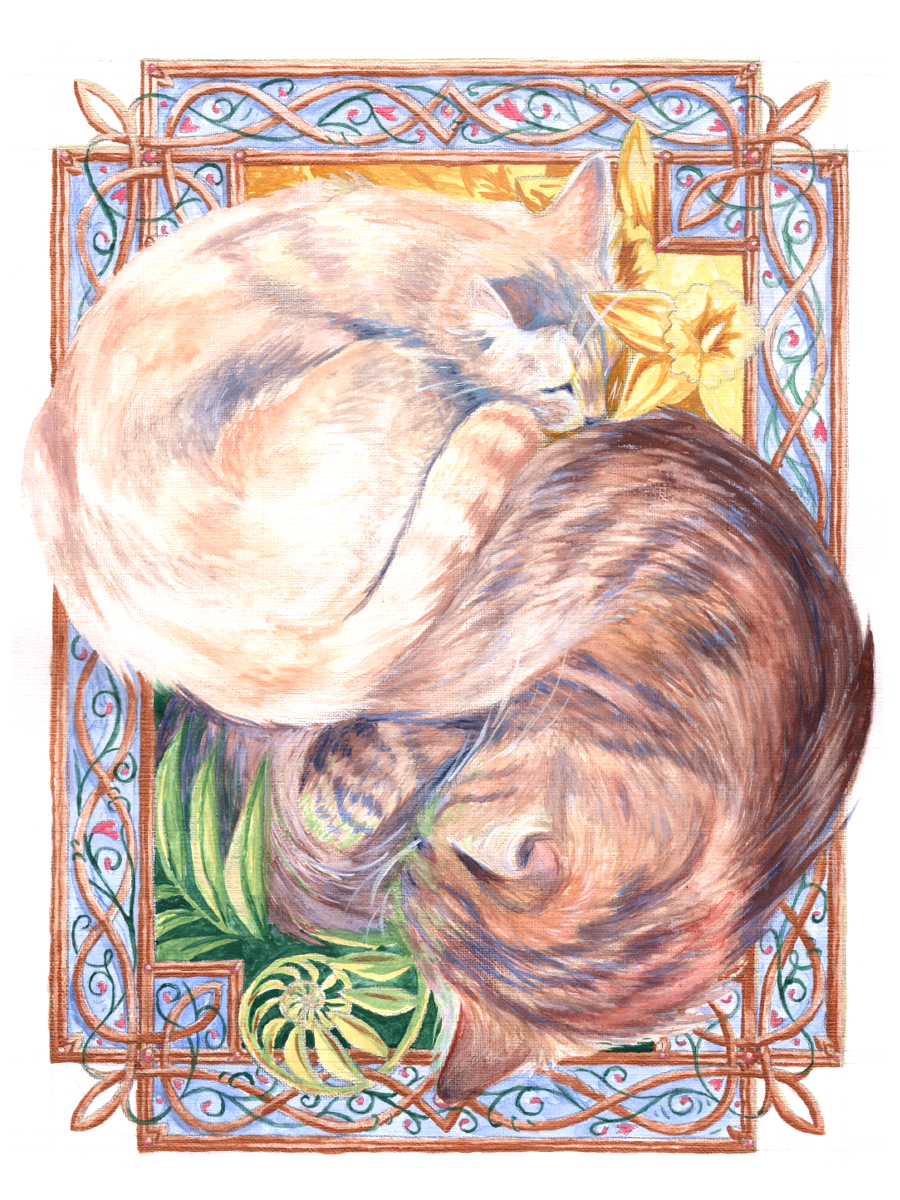
“Timeless” by Joanna Becker, gouache on canvas paper. Used with artist’s permission.
Your own work has a very illuminated, distinct style. How hard is it to then work collaboratively with an author/publisher on something that might deviate from that usual style? Or have they chosen you specifically because they’d like you to do something similar for them?
JB: Initially, it was hard for me to imagine doing client work that would not be traditional illumination. I do enjoy making art outside of the style but I had this grand vision that my work would become recognizable for such specificity, especially since my biggest passion is a very intricate traditional art. Then, I had conversations with a few professors that helped me see that there was overlap in everything. People recognize the attention to detail in any style, and that leads to these great projects!
Is there a moment when you’re collaborating like this that you know you’ve “got it” and are on the right path? What’s that like?
JB: The best thing to see in an email or message is a client saying “You knew exactly what I was imagining and made it a reality!” It inspires me to continue pouring heart into the artwork and makes it easier to go back and make the tweaks so everything is on the same page.
How did your PCA&D experience prepare you for what you’re now doing?
JB: PCA&D builds time-management skills and the range of course projects ensures we can switch gears at a moment’s notice. Making time to attend 6-8 classes per week alongside finishing projects that range from physical sculptures to full digital illustrations, enormous paintings, and research papers with a deadline helps develop a strong sense of structure and business mindset.
Were there specific instructor(s) or class(es) that really encouraged you on this path?
JB: I really wish there was enough room to give a few paragraphs to every professor who taught me throughout my time at PCA&D! Strictly speaking about children’s books specifically: Laura Korzon. She’s a professor I had for three entire years of consistent classes. Laura inspired me in sophomore year, encouraged me in junior year, and honed my children’s book illustration skills in senior year. I even took a summer class about licensing where she had us design book covers between my junior and senior years. All-around epic teachings throughout the years about licensing and illustration!
“PCA&D builds time-management skills and the range of course projects ensures we can switch gears at a moment’s notice.”
If someone is reading this and wants to pursue this aspect of illustration, what advice do you have for them?
JB: There are two huge pieces of advice: First of all, right now, take notes all the time! Learn from everyone, professors, peers, people – you may find opportunities or find new ways to think about illustration and art. Note-taking also helps recall information if you need to know what order to do a project in or avoid making the same mistakes from old projects.
Second, take every chance you get! Make your own opportunities by sending out your work and getting it out there. There is no need to wait – focus effort on a clear website and have a work email then keep a lookout for any calls for art that interest you. Someone might need exactly what you can do at this very time.
And, finally, can you share some of what’s coming up for you this year? And what do you have planned for your illuminated manuscripts?
JB: A client project I’m working on right now is about a puppy learning how to do the right thing with the help of some older dogs! I’ve also got a couple of projects that can only be revealed after their completion/publication. Otherwise, I’m planning a grand re-opening of Bushi and Brush for in-person classes!
For illuminated manuscripts, my goal is to complete a 5-year project soon, which involves 200 pages of illumination. I have a few smaller books I’ll be finishing with illustrations, but this one has been waiting long enough! Super excited, too!
- You can follow Becker’s work on Instagram, at @joannacreatesart. See more of her work at her website, joannacreatesart.com
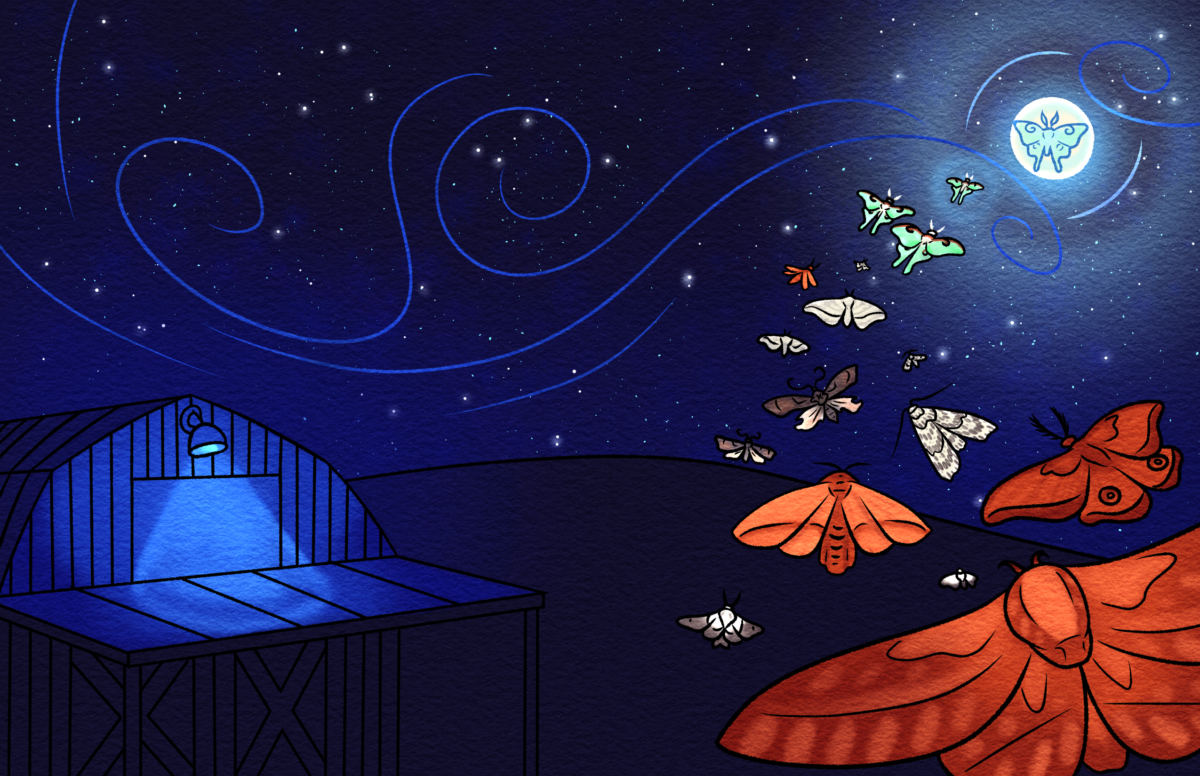
Joanna Becker illustration for “The Moth that Flew to the Moon,” by C. Ryan Lynn, used with artist’s permission.
